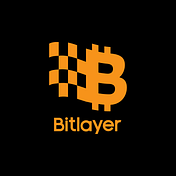
Bitlayer's Biggest Reveals at Summer Launch 2025: BitVM Bridge Mainnet, Bitlayer Network V2 Whitepaper, and V3 Preview
Bitlayer kicked off Summer Launch 2025 on July 15 with a bang. Here’s a rundown of the biggest keypoints from the event so far.
Bitlayer, a Bitcoin DeFi infrastructure project, today revealed its latest technical developments and growth strategy during its Summer Launch 2025 virtual event. Co-founders Kevin He and Charlie Hu unveiled the latest technical advancements, key milestones achieved since launch, and the updated roadmap for Bitcoin DeFi.
This Summer Launch 2025, themed “Ultimate Bitcoin DeFi Infrastructure”, is a momentous occasion for the Bitlayer team and community. Co-founders present a comprehensive technical deep dive into Bitlayer’s latest advancements, including:
- BitVM Bridge Mainnet Launch – A secure, trust-minimized bridging solution for Bitcoin DeFi.
- Bitlayer Network V2 Whitepaper Release – Introducing the computational layer for Bitcoin.
- Bitlayer Network V3 Architecture Preview – A first look at Bitlayer Network’s future roadmap.
BitVM Bridge Mainnet Launch
Arguably the most impactful announcement was the reveal of the BitVM Bridge Mainnet launch—a trust-minimized BTC bridge that operates without centralized entities or intermediary trust assumptions. This marks a major milestone as the first real-world implementation in the BitVM ecosystem. BitVM Bridge is a transformative innovation in Bitcoin bridging technology, underpinned by the advanced BitVM smart contract framework. What distinguishes the BitVM Bridge from earlier iterations of BTC bridges is its trust-minimized architecture, which significantly reduces reliance on centralized entities or intermediary trust assumptions.

The Mainnet Beta is now live—and this is only the beginning. Given that the BitVM protocol constitutes a complex infrastructure project comparable to Ethereum’s Optimistic Rollup, we will advance our roadmap methodically under the principles of security-first and progressive decentralization.
As a secure and trust-minimized representation of Bitcoin in programmable environments, the YBTC tokens minted via the BitVM Bridge maintain a strict 1:1 peg with Bitcoin. These tokens can be seamlessly utilized across Bitlayer Rollup and other supported programmable ecosystems.
Currently, the BitVM Bridge has established strategic partnerships with leading blockchain networks and protocols, including Sui, Arbitrum, Base, Cardano, and Plume, to advance the integration and ecosystem collaboration around YBTC. Additionally, Bitlayer has partnered with three major Bitcoin mining pools—Antpool, F2Pool, and SpiderPool—whose APIs now fully support real-time NST processing from the BitVM Bridge, enabling complete execution workflows.
The BitVM Bridge mainnet will be rolled out in multiple phases. Following the current beta stage, it will become fully accessible to all users, enabling trust-minimized Bitcoin transfers to other ecosystems. Users can then explore diverse DeFi opportunities, including swapping, lending, and yield-bearing staking.
Bitlayer Network Evolution Roadmap
While BitVM Bridge represents Bitlayer’s strategic expansion into new territory, the Bitcoin Layer 2 ecosystem remains its core battleground with the strongest user and community foundation. During this product launch event, Bitlayer concurrently revealed the Bitlayer Network V2 whitepaper, marking a comprehensive upgrade to the Rollup era.

Bitlayer operates on a dual-level architecture that combines a Proof-of-Stake (PoS) consensus for fast block production with a rollup framework that anchors its security to the Bitcoin network. The PoS layer allows validators to sequence transactions and produce blocks rapidly, providing a high-throughput, EVM-compatible environment. The rollup layer then periodically commits and settles the state of this L2 chain onto the Bitcoin blockchain.
The Bitlayer Network V2 introduces four groundbreaking features:
- Bitcoin-Equivalent Security: Every state change is verifiably settled on Bitcoin through BitVM-based fraud proofs, anchoring its finality and security to Bitcoin’s Proof-of-Work.
- Sub-Second Finality: Real-time confirmations. Fast enough for Dapps.
- Decentralized Sequencing: L2 block production rotates among a set of validators, ensuring no single party can unilaterally control or censor the network.
- Escape Hatch function: Allows users to securely withdraw assets back to Bitcoin L1, even if the L2 protocol halts or becomes unresponsive.

To dive into the technical details of Bitlayer Network, the full version of the 2.0 white paper is available for download here.
According to the official roadmap, while V2 focuses on solving security and scalability challenges for Bitcoin L2s, V3 will address high-performance execution as the network’s ultimate form, targeting four key objectives:
- Customizable high-performance native trading engine: Capable of sub-millisecond processing latency, enabling institutional-grade execution at scale.
- Horizontally scalable, clustered system architecture: Designed to support unlimited scalability of both the execution engine and the application ecosystem.
- An EVM-compatible, high-performance parallel execution engine: Provides the ecosystem with a high-performance execution environment while enabling seamless interaction with the native engine.
- CEX-level user experience: Combines sub-second latency, ultra-low cost interactions, and full DeFi composability.
In Summary
The product launch marks a strategic shift for Bitlayer as it positions itself at the center of Bitcoin’s infrastructure evolution. It is doubling down on Bitcoin’s infrastructure needs with a revamped strategy—now targeting both Layer 2 scaling and cross-chain bridging.
The pivot comes as demand grows for the market demand and evolving DeFi landscape. If successful, the move could accelerate Bitcoin’s role in decentralized finance, opening new ways to build applications around its native asset.
Expect more exciting leaps forward in Bitcoin’s growing ecosystem.
Learn more: https://www.bitlayer.org/.


